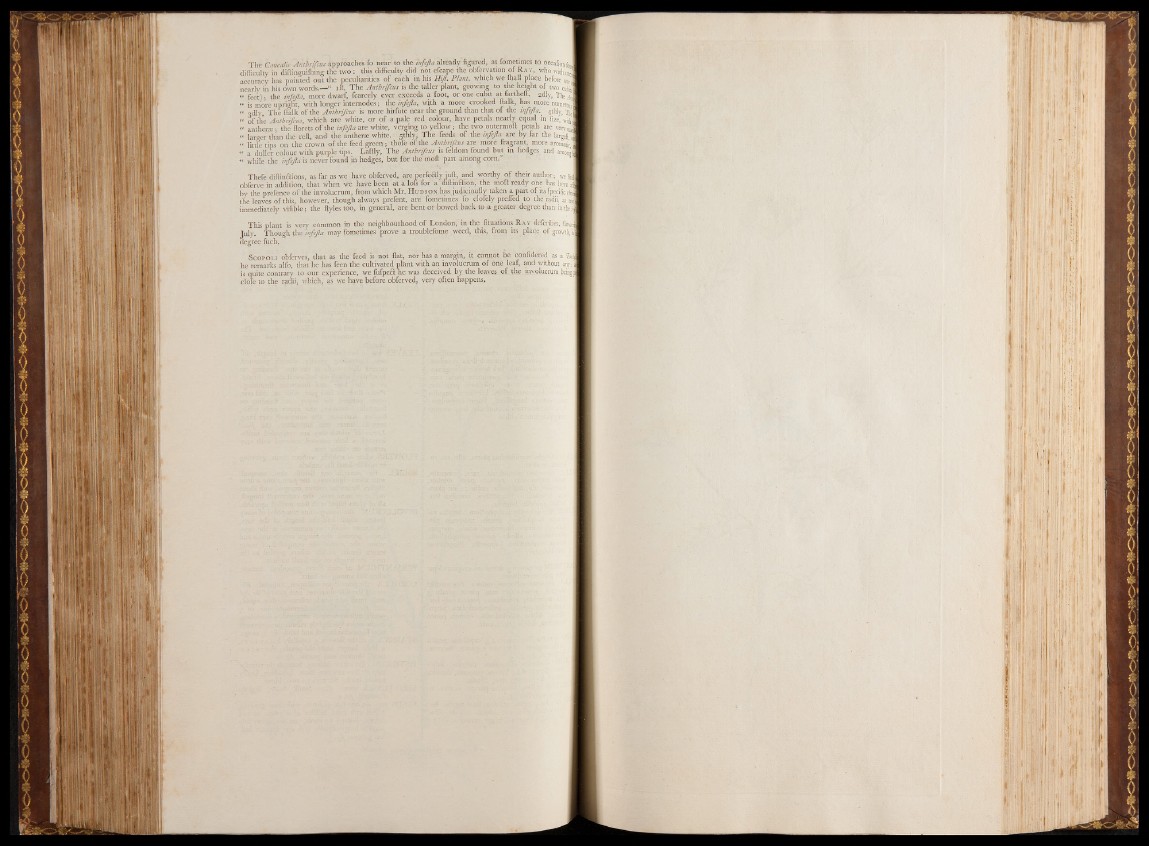
FH
The Caucalis Antbrifcus approaches fo near to the infeßa already figured, as fometimes to occaliotifj
difficulty in diflinguidiing the two : this difficulty did not efcape the obfervatton of R ay, who with und
accuracy has pointed out the peculiarities of each in his Hiß. Plant, which we lhall place before oai
nearly in his own words.— " lit, The Antbrifcus is the taller plant, growing to the height of two aibjj
•I fcetl . the infeßa, more dwarf, fcarcely ever.exceeds a foot, or one cubit at farthelt. 2dly, Thr
.. is more upright, with longer intemodes; the infeßa, with a more crooked ftalk, has more numeroiS
odly The ftalk of the Antbrifcus is more hirfute near the ground than that of the infeßa. 4thly, 7 J
• Antbrifcus, which are white, or of a pale red colour, have petals nearly equal ln'fize, »iljj
< anthene; the florets of the infeßa are white, verging to yellow; the two outermoft petals are veiy J
i larger than the reft, and the antherae white.1 5thly, The feeds of the infeßa are by far the hrgetlfj
. little tips on the crown of the feed green ; thofe of the Antbrifcus are more fragrant, more aromatij J
a duller colour with purple tips. Lallly, The Antbrifcus is feldom found but in hedges and aito»|
while the infeßa is never found in hedges, but for the:moft part among corn.” ■
Thefe diftinffions, as far as we have obferved, are perfeffly juft, and worthy of their author; « J
obferve in addition, that when we have been at a lots for a diftin&ion, the moft ready one has been J
by the prefence of the invqlucrum, from which Mr. Hudson has judioioufly taken a part o f its (pecificdfl
the leaves of this, however, though always prefent, are fometimes fo clofely prefled to the radii, as i S
immediately vifible; the ftyles too, in general, are bent or bowed back to a greater degree than in tilt
This plant is very common in the neighbourhood of London, in the fituatibns R ay deferibes, Dm«
July. Though the infeßa-may fometimes prove a troublefome weed, this, from its place, of growth®
degree fuch.
S c o p o l i obferves, tha t as the fe ed is n o t flat, n o r has a ma rgin, it can n o t b e con fld tred as a.JiJ
h e remarks alfo , that h e has fe en th e cu ltiv ated p lant w ith an in vo lu c rum o f one le af, and without any
is quite co n trary to o u r e xp er ien c e , w e fu fp e f l h e was d e c e iv ed b y th e le a v es o f the involucrum btijil
c lo fe to the radii, w h ich , as w e h a v e b e fo re ob ferv ed, v e r y often happens.